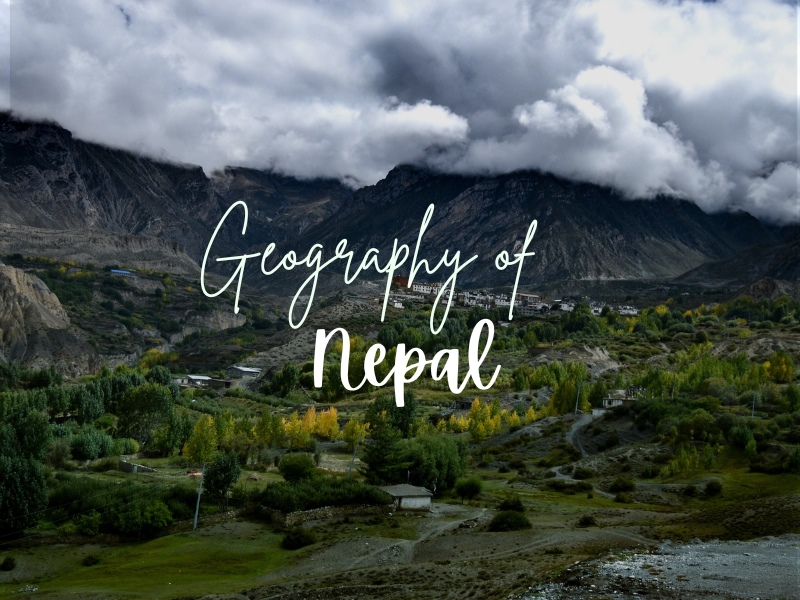Nepal, nestled in the heart of South Asia, is a land renowned for its awe-inspiring geography, a true testament to nature’s splendour. Bordered by India to the south, east, and west, and China to the north, Nepal is a landlocked nation that stretches across an area of approximately 147,516 square kilometres. Despite its relatively small size, Nepal boasts an incredibly diverse and varied terrain, from the towering peaks of the Himalayas to the lush valleys and plains, each offering a unique glimpse into the country’s geographical magnificence. In this research report, we embark on a journey to explore the captivating geography of Nepal, delving into its diverse terrain, climate, hills, valleys, and, most prominently, the majestic Himalayas.
Terrain and Landscape
Nepal’s terrain showcases an unparalleled diversity, encompassing a multitude of topographical features. The country’s geography is characterized by three distinct regions: the Himalayas to the north, the Hills (also known as the Middle Hills) at the centre, and the Terai plains to the south. The Himalayas dominate the northern landscape, forming a formidable barrier that separates Nepal from the Tibetan Plateau of China. This majestic mountain range includes some of the world’s highest peaks, such as Mount Everest, the highest point on Earth at 8,848 meters above sea level. The rugged and awe-inspiring terrain of the Himalayas is a haven for trekkers and mountaineers, attracting adventure seekers from all corners of the globe. The central Hills region, characterized by rolling hills and valleys, is where most of Nepal’s population resides. The Hills region showcases a lush and picturesque landscape, dotted with terraced fields, quaint villages, and charming towns. The Terai plains, situated in the southernmost part of Nepal, are an expansive lowland region that stretches across the border with India. This fertile and flat area is known for its agricultural productivity, supporting the cultivation of various crops and serving as a vital economic hub for the country.
Climate
Nepal’s geography has a significant influence on its climate, leading to a wide range of climatic conditions across the country. The diversity in altitude, which ranges from the lowland plains to the lofty Himalayan peaks, results in variations in temperature and precipitation. Generally, Nepal experiences four distinct seasons: spring, summer, autumn, and winter. Spring (March to May) and autumn (September to November) are considered the best times to visit Nepal, as the weather is mild and pleasant, and the skies are clear, making it ideal for trekking and exploring the country’s natural beauty. Summer (June to August) brings the monsoon season, characterized by heavy rains and humidity, particularly in the southern Terai region. Winter (December to February) brings colder temperatures, especially in the higher elevations, while the Terai plains experience milder winters.
Himalayas – The Roof of the World
The Himalayas are a defining feature of Nepal’s geography, dominating the northern landscape and stretching across the northern border with China. This majestic mountain range is a natural wonder, renowned for its unparalleled beauty and towering peaks. The Himalayas are home to eight of the world’s 14 highest peaks, including Mount Everest, the highest point on Earth. The region is a paradise for adventure seekers, offering a plethora of trekking and mountaineering opportunities. The Himalayas are also a significant cultural and religious symbol for the people of Nepal, as they are dotted with sacred pilgrimage sites and ancient monasteries, reflecting the spiritual significance of this awe-inspiring landscape.
The Charm of Hills and Valleys
Nepal’s Hills and Valleys region, situated at the centre of the country, showcases a picturesque landscape that combines rolling hills, fertile valleys, and bustling towns. The region is where the majority of Nepal’s population resides, and it is known for its cultural diversity and charming rural life. The Hills and Valleys region boasts terraced fields, traditional villages, and vibrant marketplaces, offering a glimpse into the heart and soul of Nepali culture. This region is famous for its rich cultural heritage, with ancient temples, palaces, and architecture that tell the story of Nepal’s glorious past. The vibrant festivals, traditional rituals, and warm hospitality of the people add to the region’s allure, making it a must-visit destination for travellers seeking an authentic and immersive experience of Nepal.
Conclusion
Nepal’s geography is a testament to the country’s natural beauty, cultural diversity, and spiritual significance. From the soaring heights of the Himalayas to the picturesque Hills and Valleys and the lush plains of the Terai, Nepal’s landscape offers a captivating tapestry of experiences. The majestic Himalayas, with their towering peaks and spiritual sanctuaries, are a symbol of Nepal’s grandeur and resilience. The Hills and Valleys region, with its charming rural life and cultural richness, reflects the heart and soul of the nation. The fertile plains of the Terai, supporting agricultural prosperity, exemplify the harmony between nature and human life. Together, these geographical features form a harmonious blend that makes Nepal a destination unlike any other, beckoning travellers to embark on a journey of exploration, discovery, and cultural immersion.
